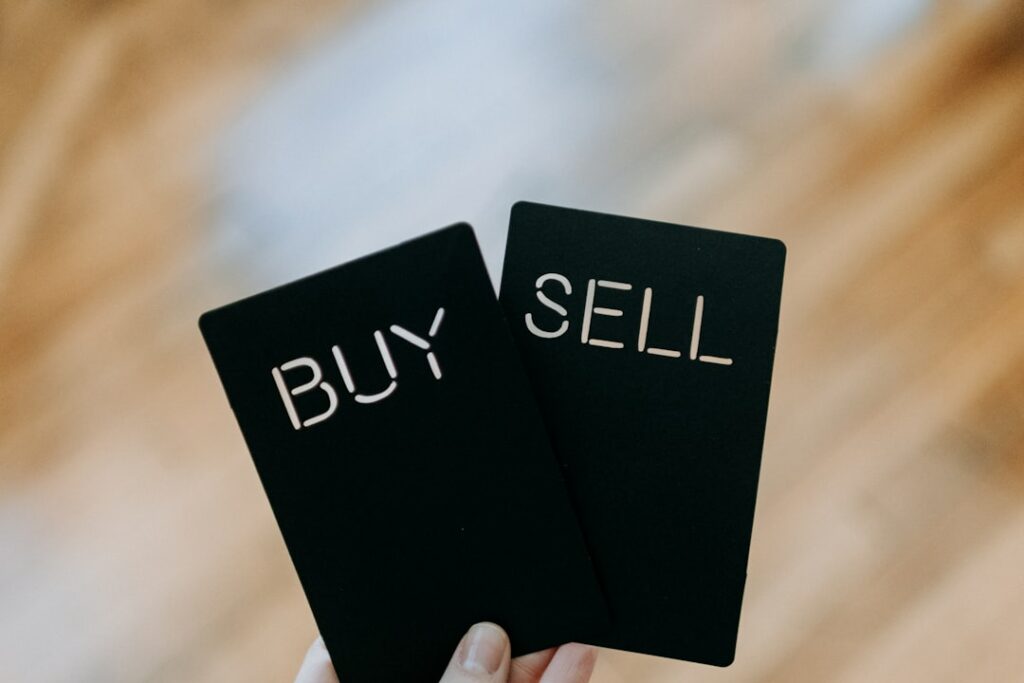Step 1: Set Up Your eBay Account and Business Foundation
Create Your eBay Account
To begin your journey selling on eBay, the first crucial step is to create an account. Navigate to eBay.com and click on the “Register” link, typically found in the top-left corner or near the “Sign in” button. You’ll be prompted to choose between a personal account and a business account. For most new sellers, starting with a personal account is sufficient, as you can upgrade to a business account later if your volume increases. Fill in your name, email address, and create a strong password. You’ll need to verify your email address, often by clicking a link sent to your inbox. Next, you’ll be guided to set up your payment method for receiving payouts. eBay primarily uses eBay Managed Payments, which often links directly to your bank account. Have your bank account details (routing number and account number) ready. You may also be asked to provide additional verification information, such as your date of birth or the last four digits of your Social Security Number, to comply with financial regulations.
Understand eBay Fees and Payment Methods
Before you list your first item, it’s essential to grasp eBay’s fee structure. eBay charges various fees, primarily an insertion fee (for listing an item, though many categories offer a number of free listings per month) and a final value fee (a percentage of the total sale price, including shipping and handling, charged only when an item sells). The percentage varies significantly by category. For instance, electronics might have a different final value fee than collectibles. You can find detailed fee tables on eBay’s “Selling fees” help pages. Beyond these, be aware of optional listing upgrade fees (e.g., for bold text, subtitles, or gallery plus images) that can increase visibility but also cost extra. Regarding payment methods, eBay’s Managed Payments system simplifies the process. Buyers pay eBay directly using various methods (credit card, PayPal, Apple Pay, Google Pay, etc.), and eBay then deposits the net proceeds (after fees) directly into your linked bank account. Payouts typically occur within 1-3 business days after the buyer pays. Familiarize yourself with the payout schedule and how to track your earnings within your Seller Hub.
Step 2: Research and Prepare Your Items for Sale
Identify Profitable Products to Sell
Successful selling on eBay starts with knowing what to sell. Don’t just list random items; actively research what’s in demand and what sells well. Use eBay’s “Advanced Search” function to look up “Sold Listings” for items similar to what you intend to sell. This shows you actual selling prices, not just asking prices. Pay attention to the condition of sold items, the number of bids (for auctions), and whether they sold via auction or “Buy It Now.” Tools like Terapeak (available through eBay Seller Hub subscriptions) offer deeper insights into market trends, average selling prices, and competition. Consider niche markets where demand might be high and competition lower. Think about items you already own that are no longer needed but have value, or source items from local thrift stores, garage sales, or liquidation sales. Always factor in your acquisition cost, potential shipping costs, and eBay fees when determining if an item can be profitable.
Prepare Your Items for Listing (Cleaning, Photography)
The presentation of your items significantly impacts their perceived value and likelihood of selling. Before listing, thoroughly clean each item. Dust, smudges, and dirt are easily visible in photos and can deter buyers. For electronics, wipe down screens and casings. For clothing, ensure it’s clean, wrinkle-free, and free of odors. Once clean, focus on high-quality photography. Use good lighting – natural daylight near a window is often best. Avoid direct flash, which can create harsh shadows and glare. Use a plain, neutral background (a white sheet or poster board works well) to make the item stand out. Take multiple photos from various angles: front, back, sides, top, bottom, and any labels or unique features. Capture close-ups of any flaws (e.g., scratches, dents, stains) as this builds trust and prevents disputes. eBay allows up to 24 photos per listing for free, so utilize this feature fully. Clear, well-lit photos are often the single most important factor in attracting buyers.
Step 3: Create Compelling Listings and Price Strategically
Craft Effective Product Titles and Descriptions
Your listing title is critical for search visibility and attracting clicks. Use relevant keywords that buyers are likely to search for. Include the brand, model, size, color, condition, and any unique identifiers. For example, instead of “Old Camera,” use “Vintage Canon AE-1 Program 35mm SLR Film Camera w/ 50mm f/1.8 Lens – Tested.” eBay allows up to 80 characters, so use them wisely. Avoid keyword stuffing or irrelevant terms. The product description is where you provide detailed information and sell the item. Start with a brief, engaging summary. Then, systematically list all relevant details: dimensions, materials, features, specific condition (e.g., “minor scuff on back,” “fully functional,” “new with tags”), and what’s included in the sale. Use bullet points for readability. Be honest and transparent about any flaws, as this manages buyer expectations and reduces returns. Emphasize benefits and uses. Maintain a professional and friendly tone. Proofread carefully for typos and grammatical errors.
Determine Your Pricing Strategy and Shipping Costs
Pricing your item correctly is a delicate balance between attracting buyers and maximizing profit. Refer back to your “Sold Listings” research to see what similar items have actually sold for. Consider your item’s condition, rarity, and current market demand. You can choose between an “Auction” format (starting low to encourage bidding) or “Buy It Now” (setting a fixed price). For unique or highly sought-after items, an auction can sometimes drive prices up, but “Buy It Now” offers more predictability. When setting your price, factor in the item’s cost to you, eBay’s final value fees, and most importantly, shipping costs. Accurately calculate shipping. You can offer “Free Shipping” (absorbing the cost into your item price), “Flat Rate Shipping” (charging a fixed amount), or “Calculated Shipping” (eBay calculates based on buyer’s location and item weight/dimensions). For calculated shipping, you’ll need the item’s exact weight and dimensions once packaged. Use a shipping scale and measuring tape. Overcharging for shipping deters buyers, while undercharging eats into your profit. Consider offering combined shipping discounts for multiple purchases.
Step 4: Manage Sales, Shipping, and Customer Service
Process Orders and Package Items Securely
Once an item sells, you’ll receive a notification from eBay. Access your Seller Hub to view the order details. The first step is to print a shipping label. eBay’s platform integrates with major carriers (USPS, FedEx, UPS), allowing you to print labels directly, often at discounted rates. This also automatically uploads tracking information to the buyer. Next, securely package your item. Use appropriate packaging materials: sturdy boxes for fragile items, padded envelopes for smaller, less delicate items. For fragile items, use ample cushioning material like bubble wrap, packing peanuts, or crumpled newspaper, ensuring the item doesn’t shift inside the box. Seal all seams of the package with strong packing tape. For clothing, place it in a plastic bag before putting it in a mailer to protect against moisture. Ensure the shipping label is clearly visible and securely attached. Drop off the package at the designated carrier location promptly, ideally within 24-48 hours of payment, to set positive expectations for the buyer.
Provide Excellent Customer Service and Handle Returns
Customer service doesn’t end after shipping. Be responsive to buyer inquiries before, during, and after the sale. Answer questions promptly and courteously. If a buyer contacts you about a received item, listen to their concerns. Many issues can be resolved through clear communication. For returns, familiarize yourself with eBay’s Money Back Guarantee policy. You can choose your return policy (e.g., 30-day returns, buyer pays return shipping), but offering hassle-free returns can increase buyer confidence. If a buyer requests a return, evaluate the reason. If the item is “not as described” or damaged in transit, you will typically be responsible for return shipping and a full refund. If it’s a “buyer’s remorse” return (e.g., “doesn’t fit,” “changed mind”), your stated return policy will dictate who pays return shipping. Always process refunds promptly once the returned item is received and inspected. Providing a positive post-sale experience encourages repeat business and positive feedback, which is crucial for your seller reputation on eBay.
FAQs
Q: How long does it typically take to get paid after an item sells on eBay?
A: With eBay Managed Payments, payouts are generally initiated within 1-3 business days after the buyer pays. The funds then typically take an additional 1-3 business days to appear in your linked bank account, depending on your bank’s processing times. So, expect to see the funds in your account within 2-6 business days from the time of sale.
Q: Can I sell internationally on eBay, and what should I consider?
A: Yes, you can sell internationally. When creating a listing, you’ll see options for international shipping. You can choose specific countries or use eBay’s Global Shipping Program (GSP), which simplifies the process by handling customs forms, import charges, and international leg of shipping for you. If using GSP, you only ship the item to a domestic GSP hub. Consider higher shipping costs, potential customs duties for buyers (which GSP handles), longer delivery times, and currency exchange rates. Also, be aware of any restrictions on items you can ship to certain countries.
Q: What should I do if a buyer claims an item was not received, but tracking shows it was delivered?
A: First, politely ask the buyer to check with family members, neighbors, or their local post office, as packages sometimes get misdelivered. Provide them with the tracking number again. If the issue persists, contact the shipping carrier directly with the tracking information to open an investigation. eBay generally sides with the seller if tracking clearly shows “delivered” to the address provided by the buyer. However, maintaining good communication and offering to help investigate can prevent negative feedback.
Q: Is it better to start with auctions or “Buy It Now” listings?
A: It depends on the item. For unique, rare, or highly sought-after items with uncertain market value, an auction can sometimes generate excitement and drive the price higher, especially if you start with a low opening bid. For common items with a well-established market price, or if you want a predictable sale price, “Buy It Now” is usually better. Many sellers use a “Buy It Now or Best Offer” option, which allows buyers to make offers while still offering an immediate purchase price. For beginners, “Buy It Now” can be simpler as it removes the uncertainty of auction outcomes.




